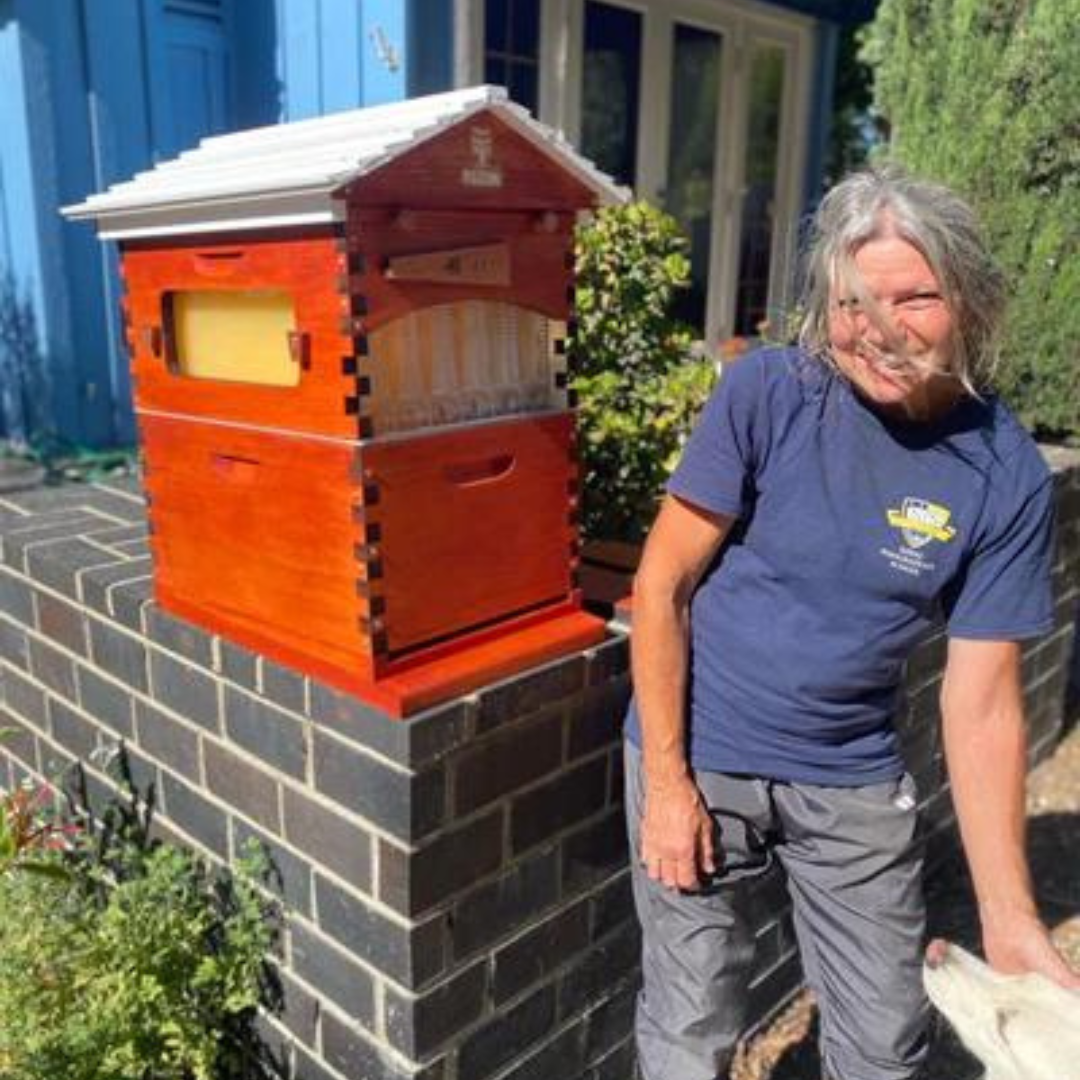Your Cart is Empty
Life on the homestead: in pursuit of (sweet) self-sufficiency
by Flow Hive 3 min read
Some people approach homesteading as if they are running away from something bad, but we feel more like we’re running towards something good.

Jordan Tony and Silvan Goddin, image supplied.
The pursuit of a self-sufficient or homesteading lifestyle has grown in popularity over the past decade. While the concept once evoked images of survivalists removed from everyday society, today it can take many forms and is a lifestyle centred on growing your own food, reducing consumption, using renewable energies, and fostering community networks.
For many homesteaders, keeping bees is a vital piece of the self-sufficiency puzzle – not only for the sweet, nutritious bonus of honey jars in the pantry, but for the essential pollination power a hive brings to your produce garden.
Below, we chat to Silvan Goddin and Jordan Tony of Homegrown Handgathered about their journey to self-sufficiency, which began back in 2016. The pair are based in Pennsylvania and share their homesteading experience, gardening tips and homegrown recipes with a global online audience.
What are the top 3 benefits you’ve seen since moving towards a self-sustaining lifestyle?
The number one thing it’s given us is a much deeper appreciation for our food. Knowing the work we did to grow every bite or remembering when and where we foraged it makes it very special.
It has given us a stronger connection to the seasons and cycles of plants and animals throughout the year. In the spring and summer we take advantage of the energy that comes with warm weather and longer daylight to work in our garden and in the winter we spend more time inside cooking with the food we’ve saved, which feels really natural.

Image by Zoe Schaeffer on Unsplash
The third benefit that comes to mind is the opportunity to continually learn new things. Often with our jobs, we get really specific with one subject and don’t have the chance to be generalists, but homesteading opens up so many avenues to explore, like beekeeping!
What advice do you wish someone had given you before embarking on this journey? Any top tips or traps to avoid?
Avoid feeling like you need to do everything all at once. Even folks who have been producing their own food for 60 years don’t know how to do everything.
Self-sufficiency is a journey and it should be a fun one. Take it one thing at a time, enjoy the learning process, and then when you are comfortable with that skill move onto the next one.
What do people get wrong when they think about self-sufficiency and homesteading lifestyles?
Homesteaders are often portrayed as hermits who cut themselves off from society to hack out a life off the grid. In our version of homesteading we are very connected to our community, whether that be through growing food in community gardens, hunting with friends or teaching workshops on foraging wild plants.

Image by Daiga Ellaby on Unsplash
The community aspect is especially important as it relates to beekeeping which has an entire culture of mentors and mentees helping one another learn the craft. Some people approach homesteading as if they are running away from something bad, but we feel more like we’re running towards something good.
How important are bees (and honey!) to the development of a self-sufficient lifestyle?
The importance of having a sweet treat when you are eating only homegrown and wild food cannot be overstated. Coming from having access to grocery stores that import goods from all over the world, it can be a bit of a shock to reduce the variety of ingredients at your disposal to what you can produce at home.
Where we live, sugar is especially hard to come by outside of the fruiting season. Speaking of the fruiting season, most of the fruit that we eat would not exist if not for the honeybees that pollinate our peaches, pears and plums. Honeybees are a borderline necessity on a small-scale homestead.

Follow Silvan and Jordan’s journey for more tips and inspiration via @homegrown_handgathered or homegownhandgathered.com.
Ready to add a Flow Hive to your garden and supercharge your produce? Choose the perfect hive for your homestead here.
Also in Customer and Flow Ambassador experiences

The Upside of Downs – enriching individuals and the community’s lives through connection, farming and beekeeping
by Flow Hive 5 min read
We speak with the Meier family of Mulberry Lane Farm in California, about their program “Upside of Downs”. Ron, Karen, Tom and Steve, along with a number of volunteers, run “The Upside of Downs” program, providing people with a healthier lifestyle and a more inclusive perspective through farming, seed-saving, beekeeping and sharing experiences. We also hear from Jon, a passionate educator and their mentor beekeeper, who has been helping along the way and upskilling Ron.
Read More
Plant it and they will come
by Flow Hive 4 min read
We speak with Lori Harris of Salt Creek Butterfly Farm in Western Springs, Illinois, about her work as a butterfly conservationist, educator and Flow Hive beekeeper. Lori's passionate about protecting pollinators and inspiring curiosity about nature in children and adults.
Read More
Paint it purple: the symbiotic relationship between a lavender farm and 40,000 bees
by Flow Hive 3 min read
We chat to lavender farmer and Flow Hive beekeeper Kirby Bivans from the Old School Farmstead in Wisconsin, about what led the Bivans family to embark on this colorful endeavour and how bees have become a vital part of their business.
Read More